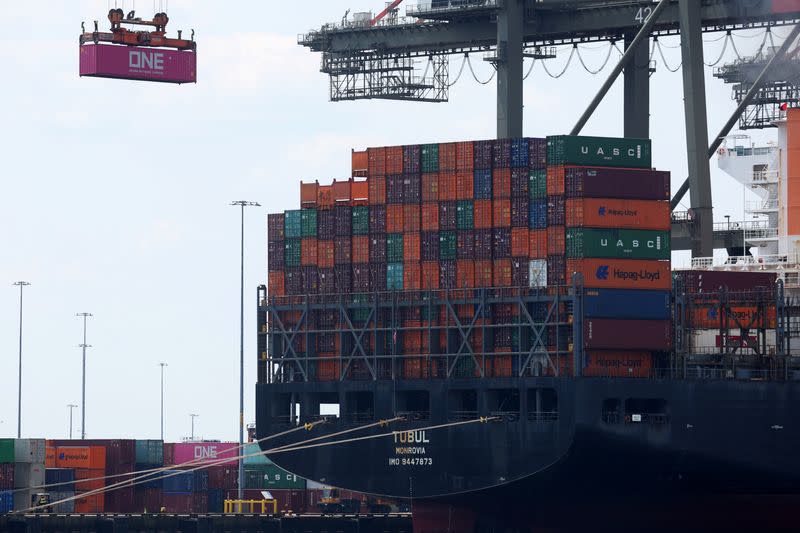US trade deficit widens in May on weak exports

WASHINGTON (Reuters) - The U.S. trade deficit widened for a second straight month in May amid a decline in exports, indicating that trade likely remained a drag on economic growth in the second quarter.
The trade deficit increased 0.8% to $75.1 billion, the Commerce Department's Bureau of Economic Analysis said on Wednesday. Data for April was revised slightly to show the trade gap rising to $74.5 billion instead of $74.6 billion as previously reported.
Economists polled by Reuters had forecast the deficit increasing to $76.2 billion in May.
The goods trade deficit widened 0.9% to $100.2 billion, the highest since May 2022. Adjusted for inflation, the goods trade deficit rose 0.5% to $94.5 billion.
Trade subtracted from gross domestic product in the first quarter, restricting the economy to a 1.4% annualized growth pace. The economy grew at a 3.4% pace in the October-December quarter. Growth estimates for the second quarter are around a 2% pace.
Exports slipped 0.7% to $261.7 billion in May, reflecting a strong dollar as the Federal Reserve keeps interest rates higher, and slowing global demand.
Goods exports plunged 1.7% to $169.6 billion. There were decreases in exports of industrial supplies and materials, mostly nonmonetary gold, other petroleum products and fuel oil. Exports of automotive vehicles, parts and engines also fell.
Services exports rose $1.1 billion to $92.1 billion, boosted by travel.
Imports fell 0.3% to $336.7 billion. Goods imports declined 0.8% to $269.7 billion. There were declines in imports of consumer goods, which were pulled down by pharmaceutical preparations. Imports of cell phones and other household goods, however, increased $1.0 billion.
Automotive vehicles, parts and engines imports fell $1.5 billion. But imports of industrial supplies and materials increased $1.4 billion, boosted by crude oil and nuclear fuel materials. Imports of services increased $0.9 billion to $67.0 billion, lifted by transport and travel.
(Reporting by Lucia Mutikani; Editing by Andrea Ricci)

 Yahoo Finance
Yahoo Finance 